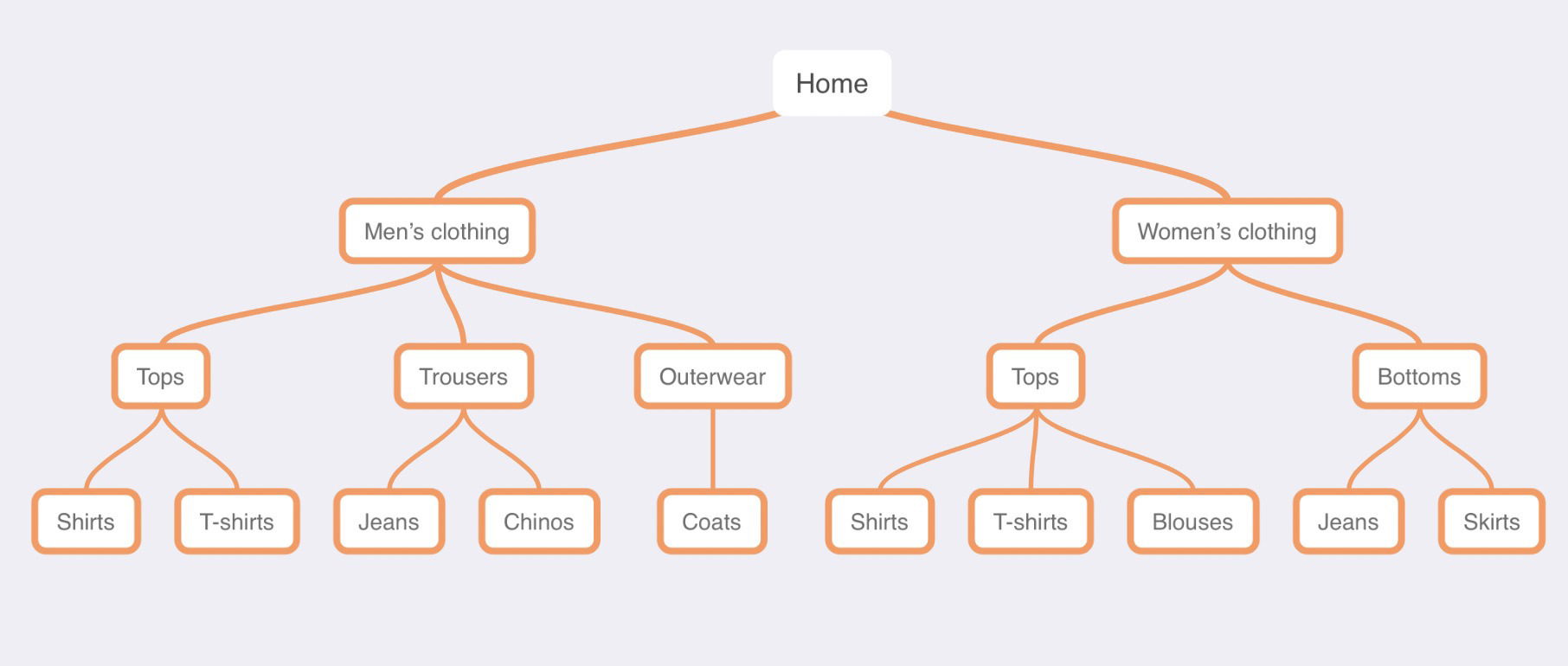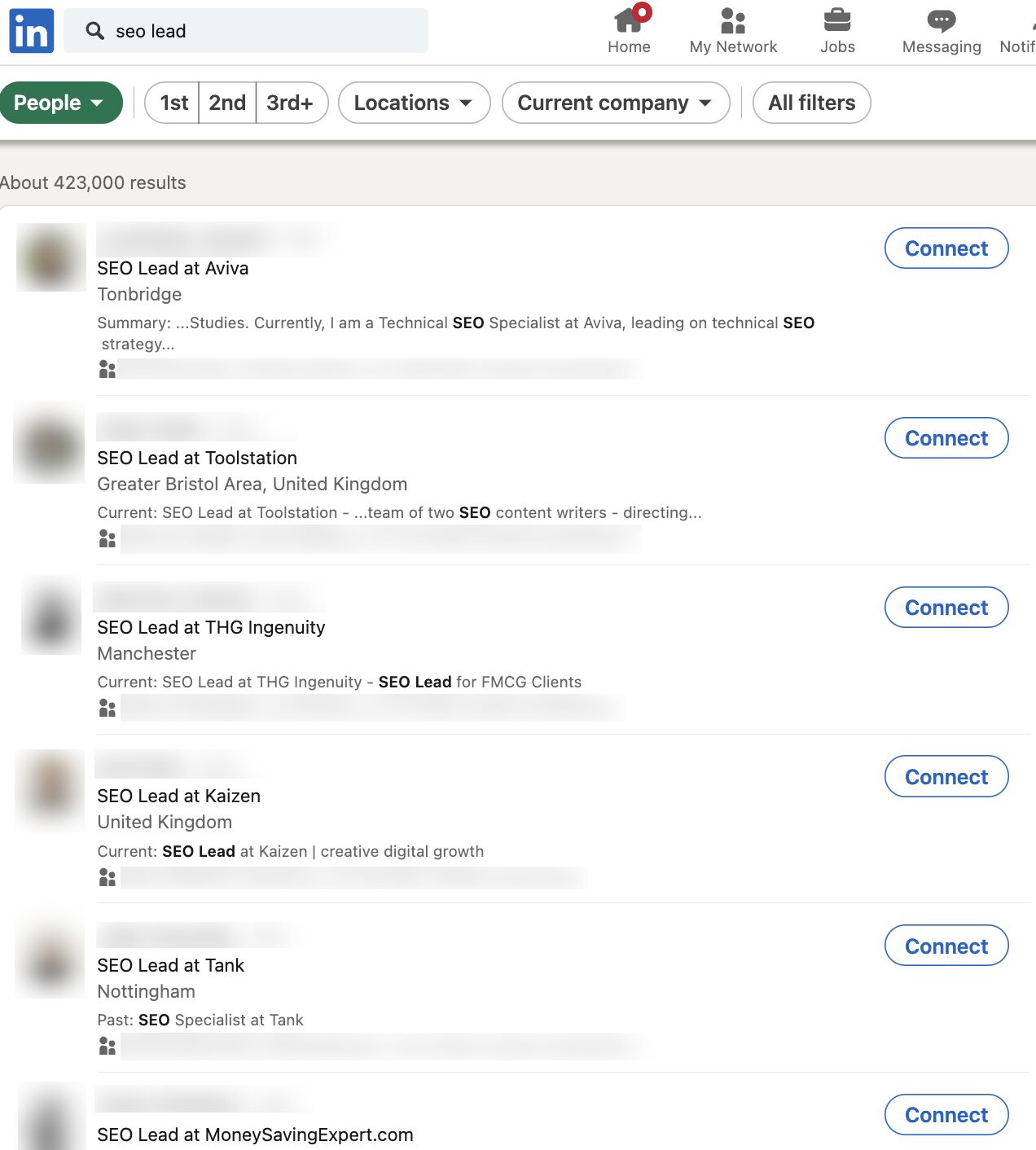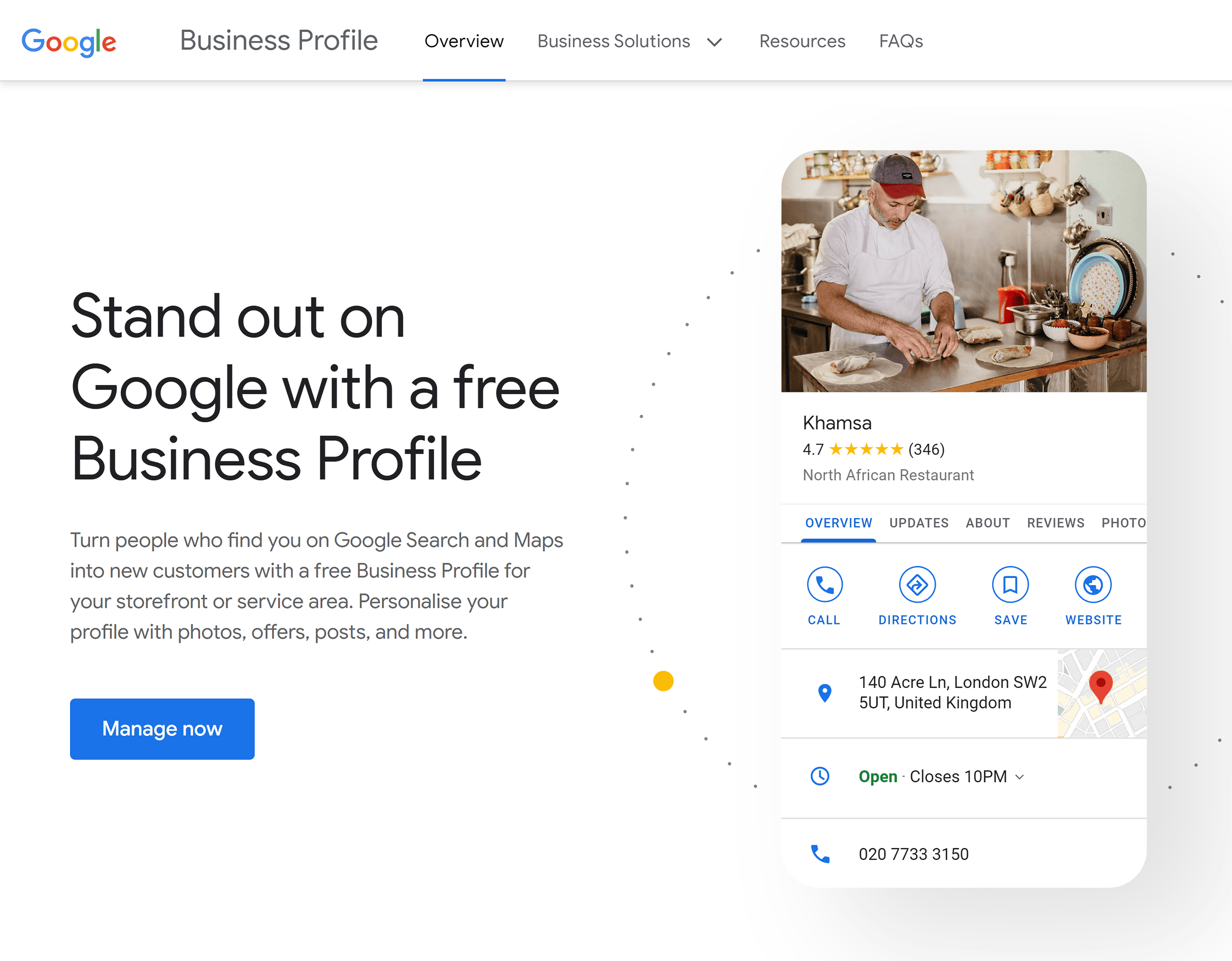
If you’re creating a new website, you’ll need to consider the website’s architecture. Structuring your website in an organized, hierarchical way gives it the best chance of ranking well in Google.
But how do you do that?
2. Add these elements to the pages
If we define site architecture as the total design and build of the site, we need to take into account a few more structural elements for it to perform well in search engines.
We’ve looked at designing the hierarchical structure of the site, but what about ensuring the necessary on-site architectural functionality is there?
Here’s what I think you should include:
Add title tags and meta descriptions

If you’ve read any SEO articles before, you’ve probably seen title tags and meta descriptions being mentioned. You’ll need to include these on every page, so it’s worth being aware of them.
The title tag is positioned above the meta description in the Google results.
Further reading
Use breadcrumbs

Breadcrumbs are not a replacement for your website’s main navigation, but they’re great at visualizing the hierarchy between pages.
From a user perspective, breadcrumbs are helpful in two use cases:
- They help you navigate the website when you land on a deep page.
- They act as a helpful shortcut to get back to the main category page.
Use descriptive SEO-friendly URLs

Once you’ve established your site structure, it’s important to use descriptive URLs to enable search engines to understand what your website is about.
Check out our guide below for more information on creating SEO-friendly URLs.
Further reading
Use a table of contents

Table of contents (ToCs) allow your visitors to navigate your content easily. ToCs are useful for navigating a page, and I recommend adding one to your blog post’s template.
Use internal linking
Internal linking is an important part of your website architecture, as it helps search engines understand the relationship between pages on your site and helps visitors navigate it.
Check out our guide below for more information on internal linking.
Further reading
Use related links

A more recent addition to the Ahrefs Blog is related links. These are at the bottom of our blog content under “Keep Learning.” Related links are a relatively low-effort way to improve your internal linking.
Use author bios

Ahrefs’ blog makes use of author bios, and they help to provide trust with Google and visitors. Author bios typically include social links. They can also provide credibility if used correctly.
This helps both Google and visitors to see that it’s (most likely) a real person behind the article. If you have a team, it makes sense to use author bios.
Technical SEO is one of, if not the, most important parts of SEO. There are a number of factors that you need to consider when building and designing a website’s architecture.
Here are some of the most important things to consider.
Use sitewide HTTPS
It shouldn’t come as a surprise that your website should use HTTPS. Google made HTTPS a ranking signal all the way back in 2014. As a result, it’s now rare to find an HTTP-only website.
Add a sitemap.xml file and submit it to Google Search Console
Once you’ve created your website and are happy with its structure, it’s worth creating and submitting your sitemap.xml file(s) within Google Search Console.
Here’s where the sitemap.xml file should be located on your website:
https://example.com/sitemap.xml
Check out Google’s guide below for more information on building and submitting a sitemap.
Further reading
Add a robots.txt file
A robots.txt file tells search engines where they can and can’t go on your site. It’s another file that you must have in your website architecture.
And here’s where the robots.txt file should be located on your website:
https://yourdomain.com/robots.txt
Check out our guide below for more information on robots.txt.
Further reading
Use <a> links
You need to ensure your links are easily crawlable for Google. Here are a few examples of what is acceptable and what isn’t for Google.
Recommended
<a href="https://yourdomain.com">
<a href="/products/category/dresses">
Not recommended
<a routerLink="products/category">
<span href="https://yourdomain.com">
<a onclick="goto('https://yourdomain.com')">
See Google’s guide below for more information on links’ best practices.
Further reading
Make it mobile-friendly, use responsive design

Google recommends using responsive design to create a mobile-friendly website. A responsive design means your webpages will look good on all devices.
Check out our guide below for more information on mobile SEO.
Further reading
Use canonical tags
Canonical tags are a snippet of HTML code that defines the main version for duplicate, near-duplicate, and similar pages—and yes, you’ll need to include them on your website’s pages.

Here’s what the snippet of HTML looks like:
<link rel="canonical" href="https://yourwebsite.com/blog/">
Check out our guide below for more information on canonical tags.
Further reading
Use structured data
Structured data is a standardized way to provide information about a webpage. It helps search engines like Google to better understand what your content is about.
It’s a good idea to ensure you have structured data in your page templates from the start, as Google uses it to enable search result enhancements, which can mean you get more focus on your result on the SERP.
Here’s what structured data enhancements can look like in Google:
Article

FAQs

The way these enhancements are presented is generally more prominent than a standard organic result, often making it worth implementing.
Further reading
Audit your site’s structure
Once you’ve decided on your site’s architecture and set it live, it’s tempting to leave it.
But it’s worth doing a periodic review using a tool like Site Structure in Ahrefs’ Site Explorer or Ahrefs’ Site Audit to ensure your site’s architecture is still in good order.
Final thoughts
Getting your website’s architecture right from the start takes time and requires a lot of research. But if you design it with SEO in mind, it will pay dividends for your website in the long run.
Using tools like Ahrefs’ Keywords Explorer and Site Explorer helps give you a competitive edge on the SERPs, as you can see what’s already working.
Got questions? Ping me on Twitter. 🙂
Content Copyrights Belong to The Author. All Rights Reserved.
We're A Dallas Digital Marketing Agency That is Experts At Social Media Marketing, Website Design and Emarketing and Promotion.



